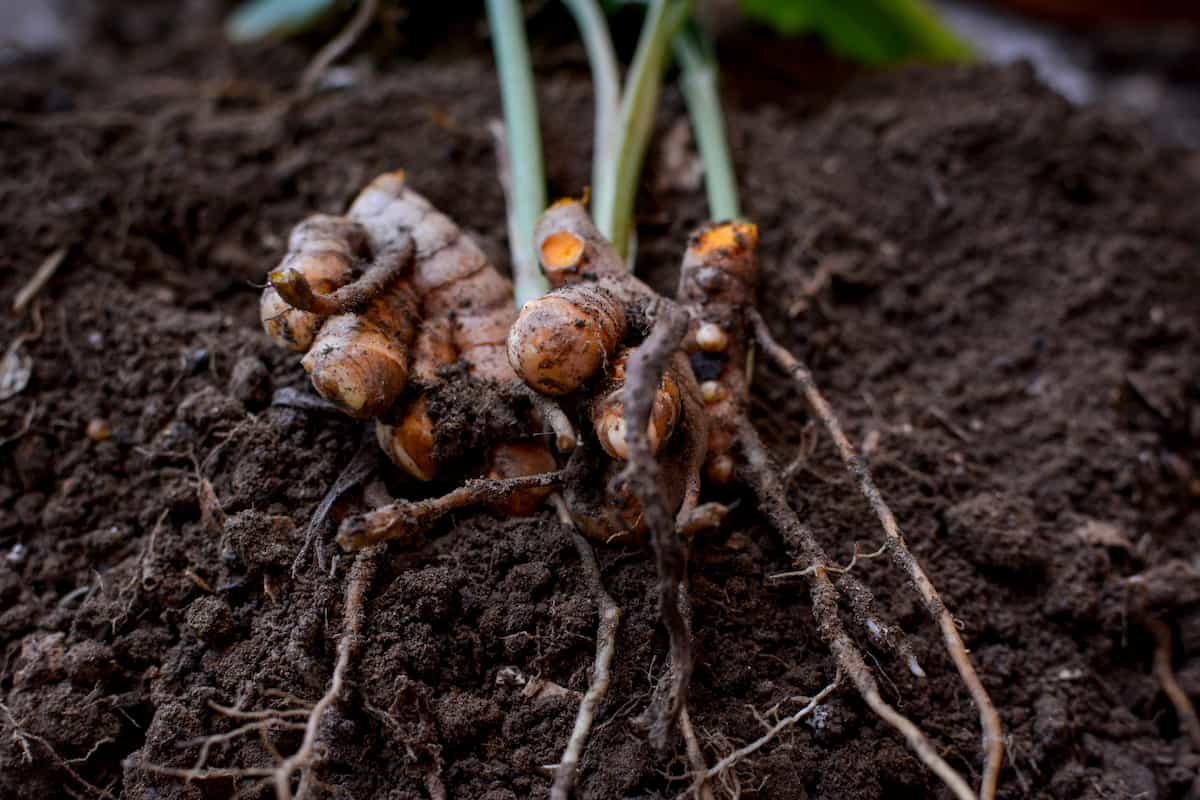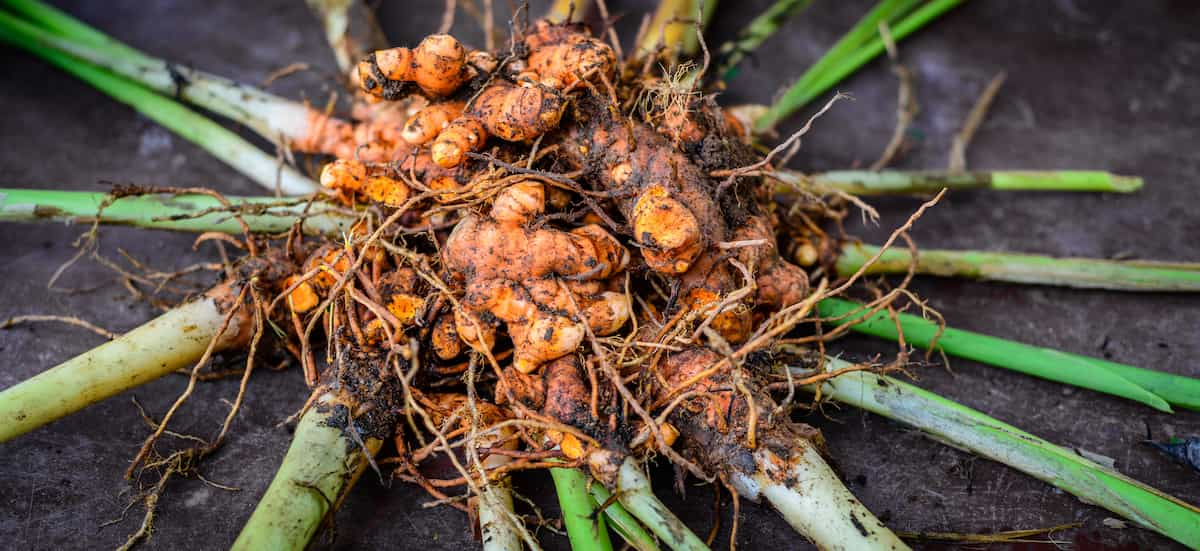When you consistently monitor and water your turmeric rhizome, you will have no problems growing it. Turmeric can be grown by planting turmeric rhizomes in small pots or planters and then transferring them outside after 6-10 months. Turmeric is often grown in poly houses by many people. With the right greenhouse, you can cultivate the herb even in winter, even though it’s not climate-friendly.

How to Grow Turmeric in Greenhouse
Light Requirements for Growing Turmeric in Greenhouse
Before starting Turmeric indoors, keep in mind that Turmeric grows well in warm sunny areas but can survive in partial shade as well. When grown indoors, it needs to be exposed to plenty of light throughout the day.
Soil Requirements for Growing Turmeric in Greenhouse
A well-drained potting soil rich in organic matter and high in nitrogen is ideal for growing Turmeric. There should be no more than 25 percent clay in the soil and slightly acidic (pH 5.5 to 7). Almost every garden center or home improvement store sells an inexpensive pH test kit if you don’t know the pH level of your soil.
Temperature Requirements for Growing Turmeric in Greenhouse
Compared to other plants you might grow indoors, Turmeric requires a relatively low temperature. Ideally, Turmeric should be kept between 18-24°C at moderate temperatures. They would benefit from a heating mat to keep them at a more constant temperature.
Choosing a Pot for Growing Turmeric in Greenhouse
Growing Turmeric in a greenhouse requires a container large enough to allow good root development and at least four inches deep to accommodate its taproot. Using a pot, ensure it has drainage holes at the bottom to ensure excess water can drain out easily and the soil stays moist.
Preparing Soil for Planting Turmeric
It is important to prepare your potting soil well before planting. This means removing any weeds or grasses and tilling the soil. When soil is tilled, lumps are worked out, and water can reach plant roots more effectively. By mixing in air, tilling also aerates the soil, preventing it from compacting. You should add organic matter such as compost or peat moss after a few weeks if your soil is sandy to improve its ability to hold water and nutrients. Add sand or compost to clay-like soils that drain poorly to improve drainage and nutrient retention.
How to Grow Turmeric from Root Cuttings?
- Pick young Turmeric for rooting. Take fresh root cuttings from healthy plants not stressed by pests or diseases. Taking cuttings is not recommended if your plant is stressed or diseased.
- Rooting should be done in a sunny area of the greenhouse. When it has been established, Turmeric prefers well-drained soil and full sun.
- Fresh roots should be cut into sections of about 3 inches each. As your cuttings grow, each section should have at least one bud, but not too many; otherwise, they will crowd out the others.
- Before taking cuttings, remove leaves from the stem’s lower half. To take cuttings, remove all Turmeric leaves from the lower half of the actively growing stem until you only have bare stems.
- Turmeric is best planted in a potting soil or sand container. Ensure that the roots grow out of the bottom of the container by watering well. The process takes about a few weeks, depending on your greenhouse’s temperature and air humidity levels.
- As soon as some roots emerge from the bottom of your container, transfer each cutting into a pot filled with potting mix or sand, and water them again with compost tea until turmeric sprouts again (about two weeks).
In case you missed it: How to Grow Eggplants/Brinjal in Greenhouse: A Step-by-Step Guide for Seed to Harvest

Fertilizer Requirements for Growing Turmeric in Greenhouse
Turmeric is a heavy feeder, using a soil mix rich in organic matter and compost. When the Turmeric is actively growing, feed it every few weeks during the growing season. You can use worm castings, organic liquid fertilizer, organic granular fertilizer, or compost tea. You should top off your growing container with compost if you notice that it is losing volume.
Watering Requirements for Growing Turmeric in Greenhouse
Make sure you pay attention to the amount of water Turmeric consumes if you plan to grow it indoors. If you use more than 1 inch (2.5 cm) of water each week, you may need to adjust your watering schedule. Before adding more water to Turmeric in a container-grown outdoors, check the soil around the plant for dryness. Once the soil feels moist, add more water until it feels moist again, at least an inch deep.
Pruning Practices followed in Growing Turmeric
When Turmeric plants are young, they should be pruned. As a result of pruning, the plant will grow more rapidly and produce more flowers. Moreover, it will ensure that your crop is ready for harvest simultaneously. If you wish to prune young turmeric plants, the first step is to remove any dead leaves or branches.
You can also thin out branches that are growing too close together by cutting them off at their base with pruning shears or scissors. If you want your plant to produce more fruit than flowers, remove any flower buds during the growing season. Keep an eye on these buds throughout the summer, so you don’t miss any. They form on the tips of new growth, so make sure you check them regularly.
How to Harvest Turmeric
Turmeric produces small rhizomes that resemble ginger roots or carrots. To harvest Turmeric, you will need to dig up the rhizomes before they mature and dry out. Turmeric rhizomes are bitterer when older than younger ones, so wait until your plants are at least 2 years old before harvesting them.
In case you missed it: How to Grow Garlic in Greenhouse: A Step-by-Step Guide for Seed to Harvest

Digging up the whole plant is the best way to harvest Turmeric. Use a shovel to dig the base of each plant after cutting back the foliage at least six inches above ground level. You should be able to pull up most of the roots in one piece from each plant. Don’t worry if they break apart – just use your fingers to remove any remaining pieces from the soil. Remove your roots from their pots and thoroughly wash them under running water after removing them.
Conclusion
Greenhouse technology is employed, which can be constructed conveniently and reasonably cheaply. A drip-irrigation system is used, which is the most efficient irrigation method and especially apt for Turmeric as it cannot stand water logging. Turmeric farming in a greenhouse has a great initiative with unlimited potential, especially for a country like India, where agricultural produce still massively depends on the monsoons and other climatic conditions.
- Feed Your Flock for Less: Top 10 Tips to Save on Chicken Feed
- Ultimate Guide to Ossabaw Island Hog: Breeding, Raising, Diet, and Care
- Hatching Answers: The Top 10 Reasons Your Chickens Aren’t Laying Eggs
- Eggs and Economics: Breaking Down the Cost of Raising Backyard Chickens
- Defend Your Greens: Proven Methods to Keep Iguanas Out of Your Garden
- Ultimate Guide to Cinnamon Queen Chicken: A Comprehensive Guide for Beginners
- Ultimate Guide to California Tan Chicken: Breeding, Raising, Diet, Egg-Production and Care
- Ultimate Guide to Marsh Daisy Chicken: Breeding, Raising, Diet, and Care
- 10 Types of Chicken Farming Businesses You Can Start for Profits